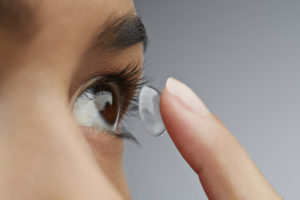December 15, 2021
By Dwight Akerman, OD, MBA, FAAO, FBCLA, FIACLE
 Researchers from Spain conducted a retrospective study to determine the long-term efficacy and predictability (defined in terms of refractive correction, not of myopia control) of orthokeratology, as well as the time course of the most common adverse effects, in a large sample of children and adults recruited from three optometric centers in Barcelona between 1997 and 2015. Case histories of 300 OrthoK patients (596 eyes; 34.3% children; 65.7% adults) were reviewed to collect information on demographics, corneal and refractive parameters, visual acuity, residual refraction, and adverse effects.
Researchers from Spain conducted a retrospective study to determine the long-term efficacy and predictability (defined in terms of refractive correction, not of myopia control) of orthokeratology, as well as the time course of the most common adverse effects, in a large sample of children and adults recruited from three optometric centers in Barcelona between 1997 and 2015. Case histories of 300 OrthoK patients (596 eyes; 34.3% children; 65.7% adults) were reviewed to collect information on demographics, corneal and refractive parameters, visual acuity, residual refraction, and adverse effects.
Regarding OrthoK’s safety profile, corneal staining remained the most frequent complication, but this was less common and severe in children. A larger percentage of children (66%) were free of complications, compared with 55% of adults. The incidence of microbial keratitis was only about seven cases per 10,000 patient-years in adults, while no cases were reported in children. Only one event of microbial keratitis occurred in adults, with none occurring in children.
During the first year, roughly 17% of children and 33% of adults stopped wearing the lenses, which mirrors other contact lens modality dropout rates. For children and adults who had successful OrthoK treatments of at least one year, approximately 89% and 96% of eyes had a predictable refractive outcome, and efficacy was 0.98 and 1.01, respectively.
The authors concluded that orthokeratology was a safe and predictable long-term procedure in children and adults, with a low incidence of serious adverse effects. They highlighted the following conclusions drawn from their investigation:
- The efficacy and predictability of long-term orthokeratology were good in children and adults.
- The incidence of microbial keratitis was 6.8 cases per 10,000 patient-years in adults, and no cases were reported in children.
- Corneal staining remains the most frequent complication of orthokeratology, and it is less frequent and less severe in children.
- Higher myopia, anterior corneal eccentricity, and smaller anterior corneal horizontal radius increased the risk of repeated episodes of corneal staining.
Abstract
Efficacy, Predictability, and Safety of Long-Term Orthokeratology: An 18-Year Follow-Up Study
Joan Gispets, Pilar Yébana, Núria Lupón, Genis Cardona, Joan Pérez-Corral, Jaume Pauné, Bernat Cortillac
Purpose: To determine the efficacy, predictability, and safety of long-term orthokeratology in children and adults.
Methods: Case histories of 300 orthokeratology patients (596 eyes; 34.3% children; 65.7% adults) were reviewed to collect information on demographics, corneal and refractive parameters, visual acuity, residual refraction, and adverse effects. Predictability was defined as the percentage of eyes with absolute values of spherical equivalent refraction ≤ 0.5 D of emmetropia, and efficacy as the ratio of post-orthokeratology uncorrected and pre-orthokeratology corrected distance visual acuity.
Results: Median duration of treatment was 37 and 28.5 months in children and adults, respectively (p = 0.022). During the first year, 17.2% of children and 33% of adults ceased lens wear (p < 0.001). For children and adults with successful ortho-k treatment of at least one year of duration, 88.7% and 95.9% of eyes had a predictable refractive outcome, and efficacy was 0.98 and 1.01, respectively. A larger percentage of children (65.7%) were free of complications than of adults (55.4%) (p = 0.015). One event of microbial keratitis occurred in adults (6.8 cases per 10,000 patient-years) and none in children. Corneal staining was the most frequent complication, with a higher incidence in adults (p = 0.007) and in higher myopia (p < 0.001), higher anterior corneal eccentricity (p = 0.019) and smaller anterior horizontal radius (p = 0.027).
Conclusion: Orthokeratology is a safe and predictable long-term procedure in children and adults, with a low incidence of serious adverse effects. Corneal staining episodes are relatively frequent throughout the course of the treatment, thus highlighting the relevance of education of experienced users.
Gispets, J., Yébana, P., Lupón, N., Cardona, G., Pérez-Corral, J., Pauné, J., & Cortilla, B. (2021). Efficacy, predictability, and safety of long-term orthokeratology: An 18-year follow-up study. Contact Lens and Anterior Eye, 101530.
DOI:https://doi.org/10.1016/j.clae.2021.101530













